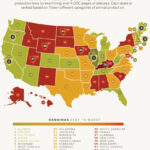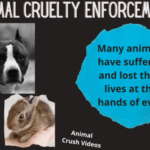Animal cruelty within the cosmetics and fashion industries has been a prevalent concern for decades. As consumers become increasingly aware of the ethical implications of their purchases, there is a growing demand for transparency, sustainability, and ethical treatment of animals. While substantial progress has been made, there remains an ongoing struggle to eradicate practices that harm animals in these industries. This article explores the comprehensive landscape of what is currently being done to address the issue of animal cruelty in both cosmetics and fashion, highlighting key initiatives, advancements, and the imperative for consumer awareness.
The journey towards eliminating animal cruelty in cosmetics began with the burgeoning advocacy for cruelty-free testing. Traditionally, many cosmetic products and their ingredients underwent extensive testing on animals, often resulting in painful procedures and dire consequences for the animals involved. However, several countries have moved to ban such practices. The European Union took a pioneering step by implementing a full ban on animal testing in 2013, making it illegal to test cosmetics or their ingredients on animals. This progressive legislation has since inspired other regions, including Israel, India, and certain states in the United States, to adopt similar measures.
The shift towards cruelty-free cosmetics is underscored by the rise of beauty brands that proudly market their products as cruelty-free. Organizations such as Leaping Bunny and PETA provide certification to companies that adhere to rigorous standards in avoiding animal testing. These certifications reinforce consumer confidence and encourage brands to adopt humane practices. Consequently, the marketplace now boasts an impressive array of cruelty-free options, from high-end retailers to budget-friendly brands, allowing consumers to make ethical choices without sacrificing quality or efficacy.
Moreover, technological advancements have bolstered the movement for animal-free testing methods. The development of in vitro testing and advanced computer modeling has revolutionized the way cosmetics are safety-tested. These methods eliminate the need for live animal testing while ensuring that products meet regulatory standards. For instance, human cell-based tests can simulate skin reactions more accurately than traditional animal models, thereby enhancing product safety without compromising animal welfare. Such innovations are attracting significant investment, and the acceleration of these technologies could herald a future where animal testing is obsolete.
On the fashion front, the narrative regarding animal cruelty is equally compelling. The use of animal products such as leather, fur, silk, and down in the fashion industry has long been a contentious subject. Prominent designers and brands are beginning to reassess the ethical ramifications of their material choices. In recent years, we have seen a notable shift towards sustainable and ethical fashion practices that reject the nonchalant use of animal-derived products. Faux fur has gained significant traction as a viable alternative, capturing the aesthetic appeal without the ethical baggage of traditional fur.
Organizations such as the Humane Society International (HSI) champion the plight of animals in the fashion industry. Their campaigns have galvanized public interest and pushed for legislative changes, such as fur farming bans in countries like the UK and Austria. Iconic fashion brands are increasingly adopting fur-free policies in response to consumer demand and changing societal values towards animal welfare. The success of these campaigns indicates a slow yet steady shift in the fashion landscape, wherein compassion is becoming a hallmark of innovation.
Ethical fashion movements, such as the “slow fashion” movement, are gaining momentum, advocating for mindful consumption and transparency in manufacturing processes. These initiatives encourage consumers to consider the origins of their clothing and the ethical implications behind their purchases. Emerging brands are focusing on ethical sourcing and utilizing plant-based or recycled materials to promote sustainability and animal welfare. Prominent examples include brands that specialize in vegan leather derived from innovative materials such as pineapples and mushrooms.
Education is paramount in combating animal cruelty in cosmetics and fashion. Consumers today are more informed and proactive than ever, empowered by social media and digital advocacy. Animal rights organizations are leveraging these platforms to raise awareness about the harsh realities of animal exploitation. Documentaries and investigative reports shine a spotlight on the often-hidden suffering within supply chains, encouraging individuals to reconsider the ramifications of their choices. The collective consciousness surrounding these issues has the potential to spark substantial change as consumers wield their purchasing power to support ethical brands.
Certainly, the responsibility does not lie solely with consumers. Brands and corporate entities must prioritize ethical practices and transparency to foster a culture of accountability. Many companies are now committing to higher ethical standards by establishing sustainability and animal welfare policies. These pledges often include commitments to 100% cruelty-free products, responsible sourcing of materials, and transparency in supply chains. Consumers must hold these companies accountable and demand verifiable actions that accompany lofty promises.
The notion of an animal cruelty-free cosmetics and fashion industry may seem like a lofty ideal. Yet, it is becoming increasingly attainable with concerted efforts from consumers, activists, and progressive brands. The wind of change is palpable, creating a ripple effect that could eventually transform the landscape of these industries. The fight against animal cruelty is only just beginning, but with every conscious decision made by consumers and every ethical policy adopted by brands, a brighter and more compassionate future is on the horizon.
In conclusion, the journey towards eradicating animal cruelty in cosmetics and fashion is replete with challenges and triumphs. As awareness grows and ethical practices prevail, the potential for a compassionate shift in these industries becomes increasingly tangible. It is vital for all stakeholders—consumers, activists, and companies alike—to foster a culture of empathy and ethical responsibility, shaping a future where animal cruelty is no longer tolerated. Through continuing dialogue and proactive efforts, genuine change is possible, leading to a world where animals are treated with the dignity and respect they inherently deserve.







